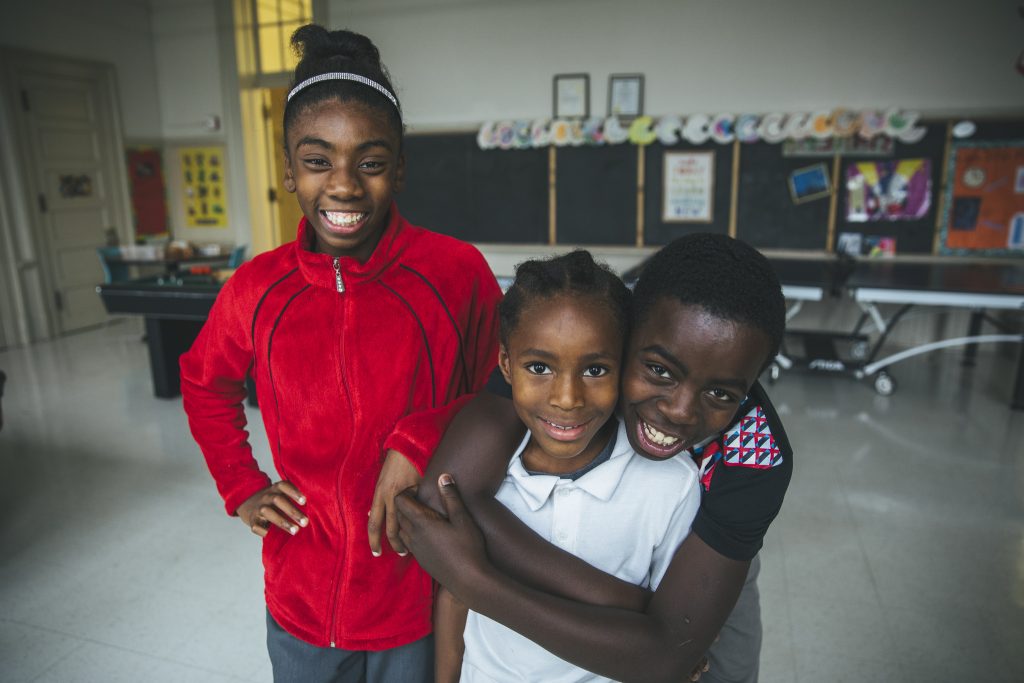Boys & Girls Clubs of America: paving the way to great futures with technology and computer science
Every day after school, the South Side Boys & Girls Club in Columbus, Ohio, alights in a flurry of joy that includes hugs, laughter, fist bumps, high fives, foosball, ping pong and the affectionate hellos of Evelyn Flewellen, whose title of “member services representative” doesn’t convey the breadth of her job.
Flewellen, who runs the front desk, greets about 70 kids by name as they enter the elegant building, where she knows their birthdays, families and if they had a science test that day. She knows when there’s no food or gas at home, when there’s no money for diapers, when gift cards and winter coats are quietly needed. She and the entire staff of youth development professionals know which kids won’t eat until the next day at school and who goes home to neighborhoods that once boomed with factory jobs and now stagger with crime and blight.
“Hearing their name called when they come up the steps brings joy to their hearts,” said Flewellen, who is so beloved that everyone calls her “Mom.” “They feel like they are somebody, and they are somebody with us. It’s important they realize we love them.”
Like all 4,300 Boys & Girls Clubs, the South Side club embraces the potential of all youths to rise above circumstances, by helping them achieve academic success, healthy lifestyles, good citizenship and productive adulthoods. To reach the goals for all 4 million youths served by the clubs, the organization is paving the way to great futures with modern technology and computer science.
“When we look at America today, we’re a society, unfortunately, of haves and have nots,” said Jim Clark, president and CEO of Boys & Girls Clubs of America. “Some kids have the opportunity to benefit from experiences that other kids don’t. Microsoft helps us level that playing field and change the lives of the youth we’re serving. It’s about more kids having a great Boys & Girls Clubs experience, and one of the ways we see that happening is through technology and the digital experience it has helped us build.”
Computer science and My.Future empower young people

Next month, Boys & Girls Clubs will launch a new computer science curriculum that includes content developed with Microsoft support to teach coding, computational thinking, game design and app development in clubs. The curriculum is a response to the growing demand for workers with technical skills and a way to bridge opportunity gaps, whether the clubs are in poor neighborhoods, rural towns or overseas military installations.
The organization will also launch a new platform, called My.Future, to massively transform how clubs interact with members. Powered by Microsoft Azure and Dynamics, the platform will enable kids, especially teens, to create online accounts so clubs can engage with them in a digital space beyond club walls. The platform will allow clubs to reward achievement with digital badges, track program data in real time and more easily increase membership, graduation rates and quality club experiences.
“This is revolutionary,” Clark said of My.Future. “We will have the most powerful and dynamic youth development, digitally based, device-based tool of any youth development organization in this country, and it will mean that students across the U.S. can have the Boys & Girls Club experience, regardless of where they live.”
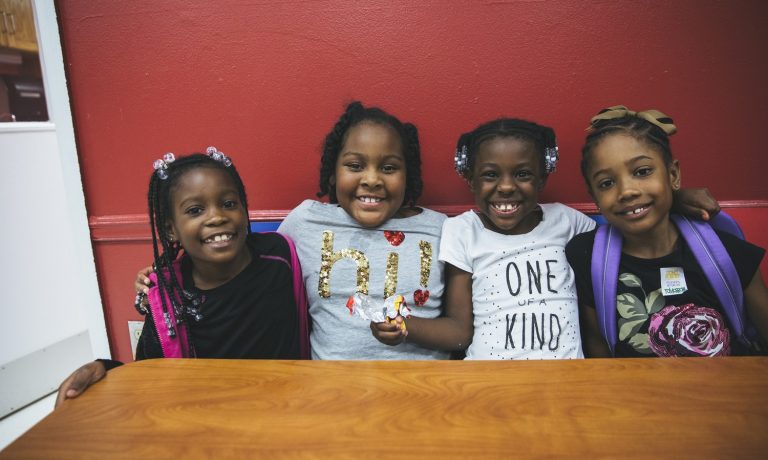
The work is part of Microsoft’s longtime support of Boys & Girls Clubs of America, which includes volunteers from the company and more than $150 million in cash and technology donations from Microsoft Philanthropies over the last 20 years. It’s also part of a major digital transformation of the 111-year-old organization, which moved its internal websites off old, unreliable servers in its Atlanta headquarters and onto Microsoft Azure last year. The donations have helped the organization serve its growing membership, which nearly doubled in the last 10 to 15 years.
“We use the services, the equipment, to collaborate, share data, be more efficient [and] effective, and use more of our resources to advance our mission: helping to create great futures for more kids and teens who come through club doors,” Clark said.
Microsoft’s partnership and expertise are also a “game changer” in empowering youths with 21st century skills, particularly in low-resource areas where access to devices, Wi-Fi and programs are difficult, said Rebecca Asmo, CEO of Boys & Girls Clubs of Columbus. Her organization oversees 14 clubs and serves 5,800 kids a year.

“Technology and computer science are infused into everything in today’s society,” Asmo said. “I’ve seen access to technology and computer science really be transformative for young people here at the clubs, [including] opening a young person’s eyes to a possible career, maybe in a health care field or manufacturing.”
Next month, clubs will provide a pathway of learning programs for young people to progress through lessons and earn digital badges accessible through My.Future. It will include Hour of Code, which offers popular “Minecraft” tutorials and other learning games, and CS Unplugged, a collection of computational-thinking lessons involving string, crayons and various non-computer activities. The pathway will also include access to App Lab, a programming environment to create simple apps.
The organization is also evaluating the impact of adding lessons through Khan Academy and Edx, the massive open online course provider, to its curriculum for more advanced students.
“Boys & Girls Clubs of America plays a critical role in helping prepare 4 million young people each year for the economic and employment opportunities of today and tomorrow,” said Microsoft CEO Satya Nadella. “It’s our privilege to support their work to build an innovative computer science education program and to help accelerate the digital transformation of their organization.”
‘A blessing to us as a family’
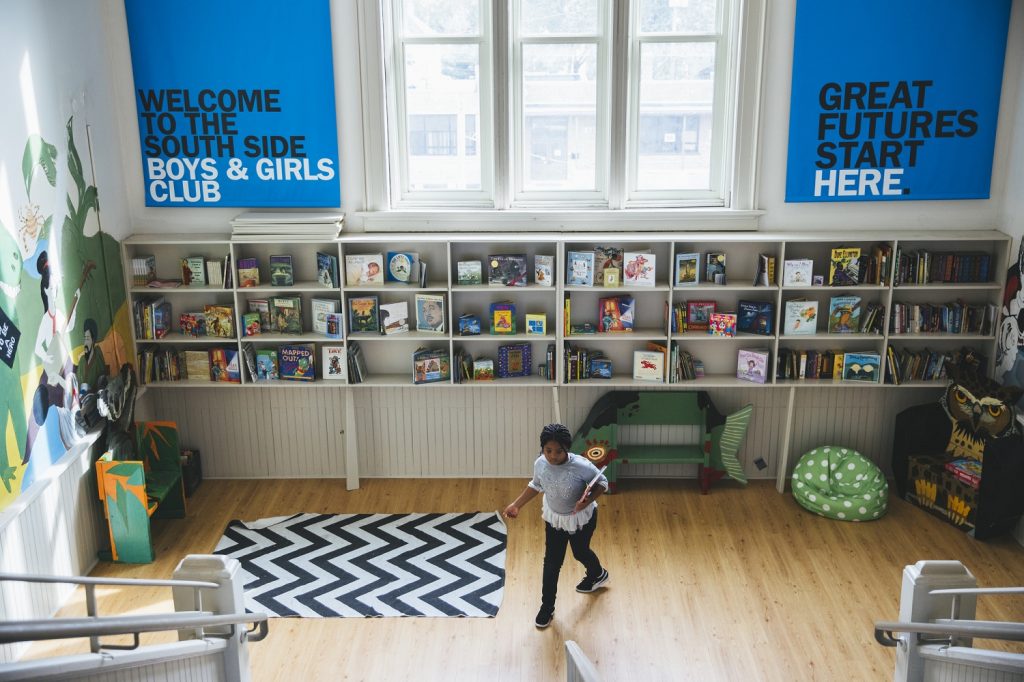
Located in Columbus’ Reeb Avenue Center, a historic building dubbed a “Hub of Hope” for its many social services, the South Side club has been teaching Hour of Code since this past spring. In a few short months, middle-school siblings Daveyonna and Davin – giggly and a little shy – have already become talented coders from crushing “Angry Birds” tutorials.
“It makes me feel that I’m very smart and I could do anything I want with coding,” said Daveyonna, who is 12, loves basketball and wants to learn how to fix computers and TVs. Her brother Davin, 13, smiled with pride over his ability to solve Hour of Code puzzles before the club’s computer science specialist could. The club overall has been an enormous boon to the well-being of both kids.
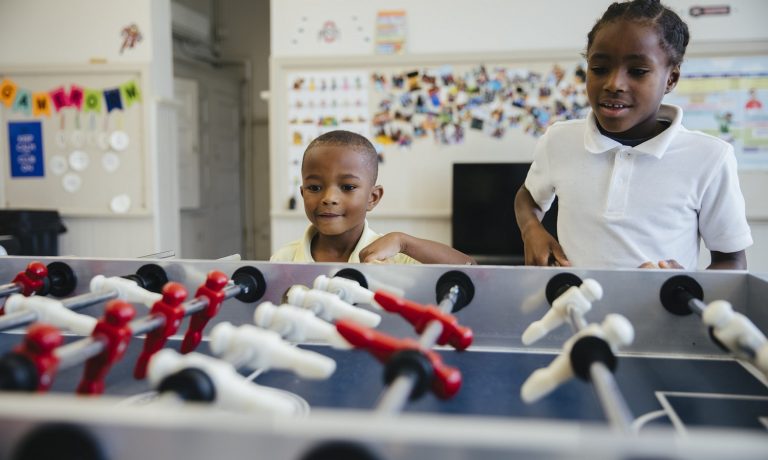
In September, their small rental home lacked internet and was in foreclosure, and their mother, Ushawnda Jones, was looking for work and a new place to live. A single parent of four kids, she wanted a job as a hairdresser or housecleaner, but a heart condition made employment difficult.
“It’s a blessing to us as a family. It’s like family to us, a second family and very helpful,” Jones said of the club, which also takes care of her youngest child, 7-year-old Johshawn. Her fourth child is in college.
Jones, who grew up in foster homes and left school before 10th grade, is grateful for the opportunities her kids have at the club that she never had. She has loved watching Daveyonna bloom with self-assurance, Davin dramatically improve his grades and Johshawn thrive with good care.
“I’m glad they’re spreading their wings,” she said. “I hope for a good future for them. I hope it’s better than mine. I hope they can achieve every goal they put their mind to.”
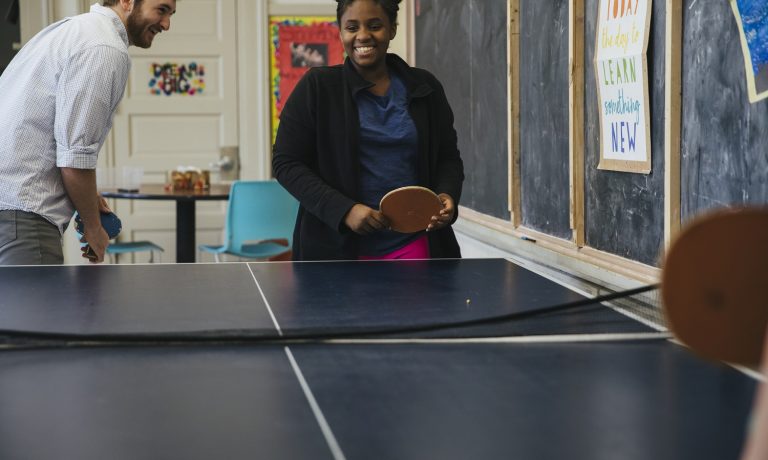
The same hopes resonate with Ashley Shydlowski, who grew up volunteering at a Boys & Girls Club with her grandparents and now teaches computer science at the South Side club. She considers her job of preparing kids for high school graduation, college and careers a personal, fulfilling mission.
“There is so much that we have to deal with every single day,” said Shydlowski, whose daily routine includes homework help, coding lessons, teen job training and serving dinner, which on a recent night was a hit with chicken, potatoes and green beans.
“There’s homelessness. There’s abuse and neglect and all of these other issues,” she said. “It will never be just a job. There’s no price to giving them a better quality of life.”
Her rewards come when her kids smile and hug her, accidentally call her “Mom” and understand coding better than she does. Recently, she was happy to befriend a kid from another Boys & Girls Club who mowed her lawn.
“They truly aren’t just kids that I see from 3 to 8 after school,” Shydlowski said. “They’re really part of my community. And to be quite honest, if we fail them, we fail our future.”
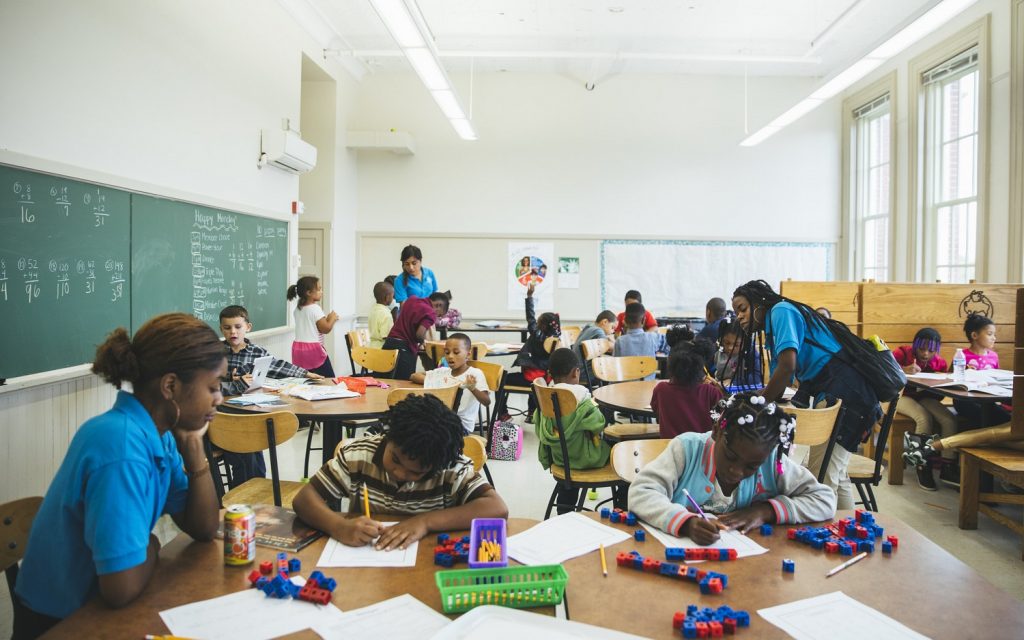
Broadening horizons with computer science in Ozark, Alabama
Hundreds of miles away at the Boys & Girls Club of Southeast Alabama, the mission is the same, but in the town of Ozark, where churches dot the rural countryside, jobs orbit the nearby U.S. Army base of Fort Rucker, and kids have few after-school outlets except sports.
“The Boys & Girls Club is so important for Ozark,” said program director Jessica Gardner, who grew up in town and started working at the club when she was 17. “Without us, the kids would have nowhere else to go. There are no other things to turn to. To keep the kids safe and out of trouble, this is the only option.”

On a recent humid day, the club, which serves 150 youths during the school year, bustled with games, homework and kids singing “Watch me whip, watch me nae nae!” as they lined up for a snack. Gardner – a cheerful leader who includes Southern dessert “nanner puddin’” on a list of favorite things posted in her office – greeted everyone with warmth.
“Your hair is pretty!” she told a girl, who beamed. She enveloped another kid in a hug and later served dinner out of a small kitchen.
The club is also one of few places in town that teaches computer science to young kids, many of whom found new interests through coding and horizons broader than Ozark’s population of 14,000.
For Katelyn and Ashelynn – 13-year-old girls and professed “technology geeks” – coding lessons at the club and a digital media class in school have empowered confidence and creativity.
“I felt very accomplished,” Ashelynn said of fun apps she and a team created, including one with a meowing cat. The problem-solving nature of coding also boosted her perseverance in other areas, including school, archery, flute and singing.
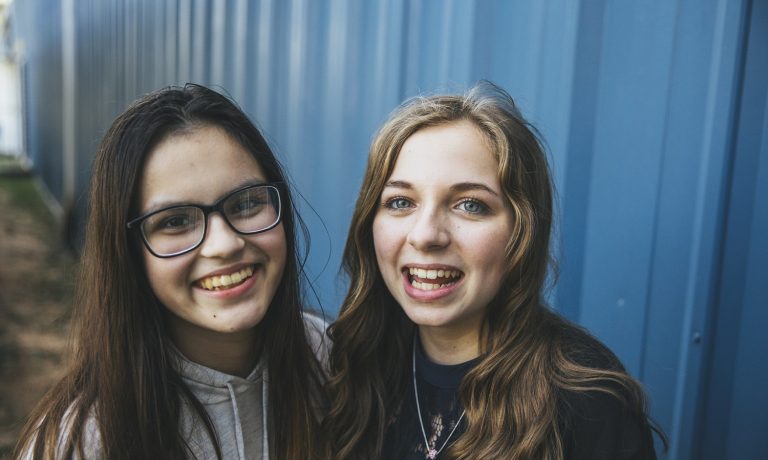
“It definitely made me want to keep trying and improve,” she said.
Katelyn, a high school freshman, said the club helped her focus on her future, in which she wants to sing and act in a big city far from Ozark. She discovered her passion in the club’s choir.
“When I got to the Boys & Girls Club, everything changed,” she said. “I started thinking about colleges and it definitely changed who I wanted to be and what I wanted to do for other people.”
Hour of Code also reinforced a sense of expanded possibilities for Katelyn, who thinks the potential to do big things with a small hard drive and motherboard is “cool.”
“I see girls that are 10, 11 years old and they’re creating robots that can help people with mental disabilities and things like that with coding,” she said. “It’s really amazing. And if they can do it, I can do it too.”
Lead image: Daveyonna, left, with brothers Johshawn, center, and Davin at the South Side Boys & Girls Club in Columbus, Ohio. All photos by Brandon Ritter.
Learn more about the work Microsoft Philanthropies does in support of nonprofits, and the mix of donated and discounted services they offer nonprofits, at Microsoft.com/nonprofits.

